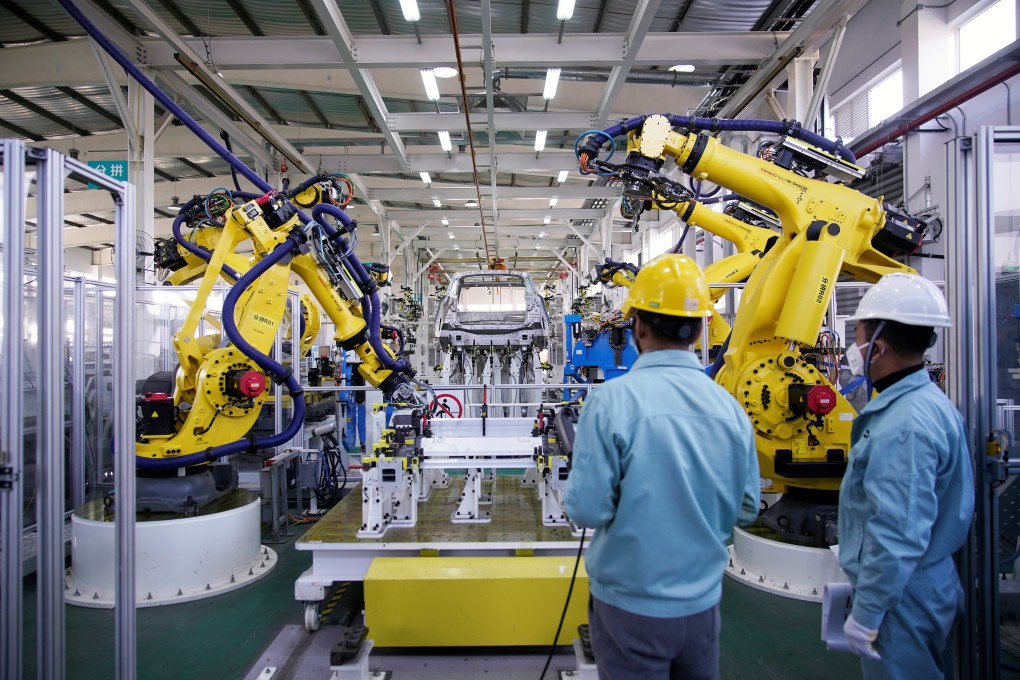Advertisement
China’s ‘two sessions’ 2021: Beijing zeroes in on eight core areas for country to become manufacturing superpower
- The renewed focus on advanced manufacturing forms an integral part of China’s 14th five-year plan
- The strategy would help offset rising production costs, reduce reliance on foreign technologies and enhance competitiveness against the US
Reading Time:3 minutes
Why you can trust SCMP
49

China unveiled on Friday a comprehensive plan to upgrade its manufacturing capabilities by 2025 via eight priority areas, sharpening its global competitiveness amid a broad trade and tech dispute with the United States.
The plan, which was introduced at the annual meeting of top legislative body the National People’s Congress (NPC), is focused on rare earth and special materials, robotics, aircraft engines, new energy vehicles and smart cars, high-end medical equipment and innovative medicine such as vaccines, agricultural machinery, major equipment used in shipbuilding, aviation and high-speed rail, and industrial applications of China’s Beidou global navigation satellite system.
“We must keep the share of manufacturing stable in the overall economy and enhance China’s competitive advantages in this sector,” the government said in the 142-page 14th five-year plan, which is set to be endorsed by the NPC’s nearly 3,000 delegates.
Advertisement
Beijing’s emphasis on advanced manufacturing forms an integral part of the country’s 14th five-year plan, which spells out the country’s economic and development goals for 2021 to 2025. The “two sessions” – the annual gatherings of the NPC and the Chinese People’s Political Consultative Conference – provide a window on the central government’s new priorities and programmes.

02:18
Two Sessions 2020: China sets no GDP target, defence spending growth slows
Two Sessions 2020: China sets no GDP target, defence spending growth slows
The renewed focus on advanced manufacturing, years after Beijing played down its “Made in China 2025” strategy amid complaints from Washington and Brussels, reflects the Chinese government’s determination to pursue a hi-tech transformation of this sector. That would help offset rising production costs, strengthen the country’s position in global supply chains, reduce reliance on foreign technologies and enhance its competitiveness against the US.
Advertisement
China’s latest manufacturing strategy comes amid reports that the US Senate is considering including US$30 billion in funding in a new bill to boost competitiveness against China. US lawmakers aim to bring the package, which would include other elements to boost America’s tech sector, to a full vote in April, according to a Reuters report citing a congressional source.
Advertisement
Select Voice
Choose your listening speed
Get through articles 2x faster
1.25x
250 WPM
Slow
Average
Fast
1.25x